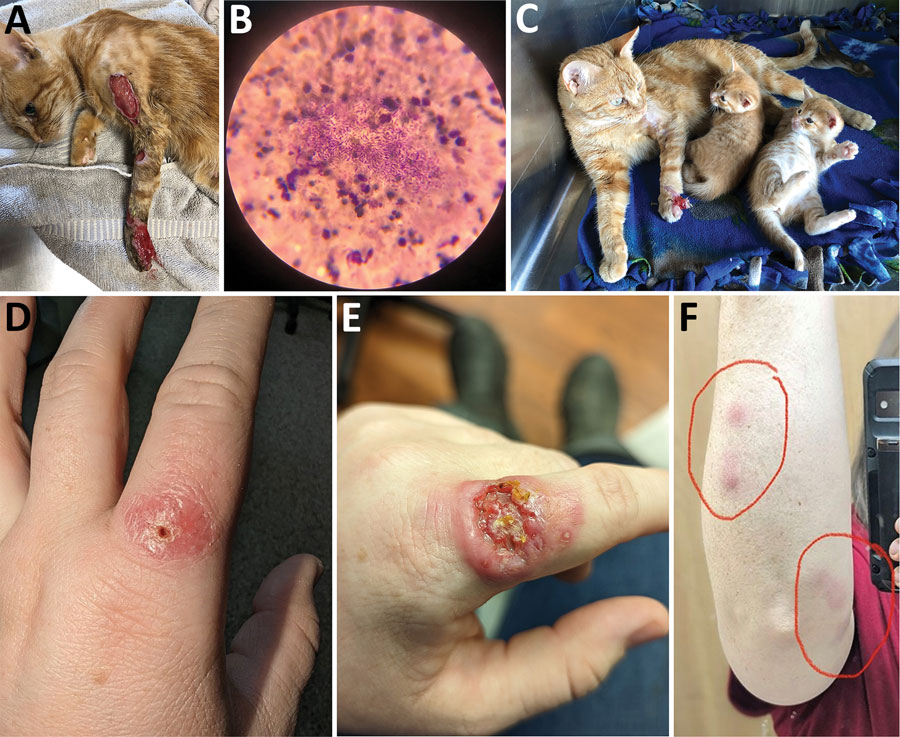Volume 30, Number 5—May 2024
Research Letter
Sporotrichosis Cluster in Domestic Cats and Veterinary Technician, Kansas, USA, 2022
Figure

Figure. Clinical manifestations seen in pregnant 2-year-old cat and human from a sporotrichosis cluster in domestic cats and veterinary technician, Kansas, USA, 2022. A) Severe lesion on cat 1 in August 2022; B) cytological examination from cat 1’s lesions showing numerous cigar-shaped yeasts consistent with Sporothrix; C) image of cat 1 with kittens and improved lesion in September 2022; D) lesion on the finger of a veterinary technician who had contact with cat 1; E) ulcerated and more severe lesion on technician’s finger after X days; F) lymphadenopathy on technician’s arm. Cat 1 initially was treated with antibiotics in August 2022 and lesions improved on antifungal therapy. However, the cat’s lesions returned and worsened in October 2022, after discharge from the facility. In November 2022, a veterinary technician developed a small lesion 1 week after being poked through the glove by a claw on cat 1’s infected paw. Lymphadenopathy progressed up the technician’s arm (red circles, panel F) in a sporotrichoid pattern along dermal and lymphatic vessels.